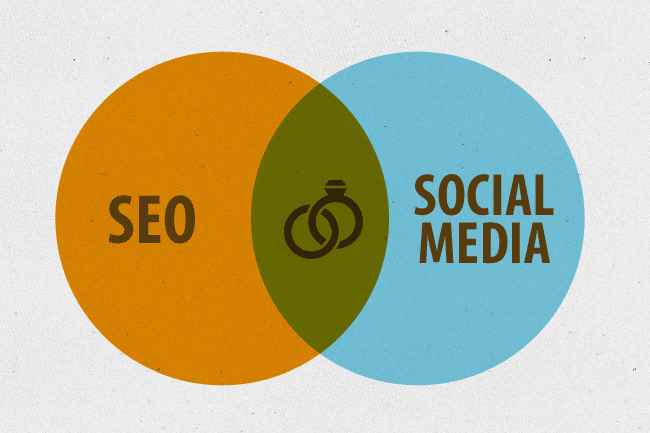The following is a list of the significant Google algorithm update history adjustments over the past ten years, along with a brief explanation of what each change meant for users and web admins.
Caffeine IndexUpdate (2010)
Google introduced its brand-new Caffeine indexing system in June 2010. The new indexing method was developed to deliver search results to users more quickly and assist publishers in increasing the rate at which their material is viewed.
Panda Update:(2011)
As part of Google’s effort to provide consumers with high-quality material, the Panda update provided a new ranking signal that penalized content farms and keyword stuffing. It was able to identify thin, spammy, and low-quality information and subsequently remove it from the top search rankings, which improved the overall quality of the search results.
Penguin Update(2012)
The Penguin algorithm update’s primary objective was to zero in on websites that engaged in deceptive link-building strategies and contained webspam. Google referred to it as an “upgrade to their webspam algorithm.”
Venice (2012)
The modification to the Venice algorithm increased search results for goods and services located within a greater geographic vicinity to the person searching. Users who searched had a considerably better chance of discovering effects that originated either within their city or town or relatively close by.
Consider internet searches such as “fitness center near me” and “fitness center Boston.” After this update, the ten blue links in the search results were more likely to provide options based on the local area.
Pirate (2012)
The upgrade to the pirate algorithm was carried out to prevent websites that had received reports of copyright infringement from ranking well in Google’s search results. Because Google was aware that piracy was a significant problem, the company has taken measures to combat it. These measures include checking any websites that have been reported for copyright infringement in a manner that is contrary to the Digital Millennium Copyright Act (DMCA).
Hummingbird (2013)
The Rufous Hummingbird, The recent tweak to Google’s algorithm, had a significant impact on the user experience of the search engine. Because of this improvement, Google can now better comprehend what we refer to as “search intent.”
Because of this, the search engine was able to more correctly contextualise user queries and content on websites and connect the two and this can be done by a professional seo service.
Pigeon (2013)
The most recent update to the Google core algorithm, Pigeon, focused on enhancing local search results. Pigeon was developed to bridge the gap between Google’s web algorithm and Google’s local search algorithm to improve ranking metrics based on a user’s proximity to a business.
HTTPS/SSL (2014)
The HTTPS/SSL update was implemented as part of Google’s “HTTPS Everywhere” initiative, which aimed to increase the overall security of the internet and ensure that users were directed to reputable and risk-free websites based on the search results they viewed.
They pushed web admins to move their websites away from the HTTP protocol and toward the HTTPS protocol by installing SSL certificates on the servers that hosted their websites.
Mobilegeddon “MOBILE-FRIENDLINESS” UPDATE (2015)
Mobilegeddon was an update released by Google in April of 2015 and is also known as the “mobile-friendly” update. If implemented, this would be the first significant change to address the “mobile-first” agenda being pursued by Google.
For a web page to be compatible with mobile devices, it must fulfill several predetermined graphical specifications. To be more specific, the dimensions need to be such that they fit nicely on a mobile device (smartphone) screen.
Rankbrain(2015)
The RankBrain update included the addition of new machine-learning artificial intelligence, which will assist in determining which search results are the most relevant to a specific query.
With this upgrade, searches are put through an interpretation model that can use any combination of parameters to discern intent, such as location and word count, and offer the most relevant answers possible.
Possum (2016)
The Possum upgrade resulted in better results for local searches. Before this modification, it was tough for businesses situated on the outskirts of a location’s physical city limits to rank well for the keywords related to that location.
This update rectified problems of that nature. It also made the searcher’s physical location more critical and the variations of local terms, which were more sensitive to differences in meaning.
INTRUSIVE INTERSTITIALS UPDATE (2017)
In 2017, Google modified its algorithm to cut down on invasive interstitials. In their most basic form, intrusive interstitials can be considered giant pop-ups. It is made more difficult for a user to examine the content of a website and obtain the information they require due to these advertisements, which cover a significant amount of the page.
Even if the material contains obtrusive interstitials, it is still possible to obtain high search results if it efficiently answers user search queries. This was explained by Google as one of the goals of the upgrade, along with reducing spam to a minimum and improving SEO.
MOBILE PAGE SPEED UPDATE (2018)
Google said in January 2018 that they would be implementing a “speed update” to their algorithm. This change would include new ranking signals that would give mobile search results preference to pages with a fast mobile page speed.
This change was a part of both the overarching “speed up the internet” campaign that Google has been working on and the “mobile-first” initiative that Google is working on.
MEDIC (2018)
Because of the Medic update, it is now easier to determine if online information possesses the competence, authority, and trustworthiness (EAT).
BERT UPDATE (2019)
The BERT algorithm, also known as the Bidirectional Encoder Representations from Transformers system, is a machine learning system that processes natural language. It assists a search engine with understanding what the meanings of words within a sentence are to a human being.
The BERT upgrade lets Google comprehend search queries more efficiently and determine which information is of higher quality and more relevant to user search queries. Additionally, the update enables Google to determine which content is most relevant to user search queries.
Following the use of BERT, Google is now able to identify nuances and underlying distinctions in the meaning of words based on their context.
FEATURED SNIPPETS (JANUARY 2020)
The Featured Snippets upgrade removed duplicate URLs from search results pages that featured snippets on them. For instance, if your web page had been selected as the featured snippet for a particular query.
And were also ranking in the second position with one of the standard blue links, your URL would have been removed from that listing after Google decided to count Featured snippets as one of the ten links shown. This decision was made because Google chose to rely on Featured snippets as one of the ten links shown.
PASSAGE RANKING (FEBRUARY 2021)
Because of a recent change called Passage Ranking, Google can now prioritise certain sections of a web page when displaying search results. It was previously challenging to meet intent from particular queries and was one of the driving forces for this improvement.
This was because the answers were frequently hidden deep inside the text of web pages. Consider this situation in terms of the example of finding a needle in a haystack. The solution to this problem was for Google to consider the context of individual passages on a web page as part of its evaluation of which search results should receive higher rankings.
PRODUCT REVIEWS (APRIL 2021)
The Product Reviews regularly incorporate in-depth research and analysis from professional and amateur publishers into their reviews of better rewards. In the past, it was simple for reviews with small, repetitive, and summary-oriented text to achieve a high ranking in Google search results.
PAGE EXPERIENCE (JUNE 2021)
Page Experience is a ranking factor that previously included mobile-friendliness, security, safe browsing, and intrusive interstitials. The Page Experience update adds three new Core Web Vitals (Largest Contentful Paint, First Input Delay, and Cumulative Layout Shift), bringing the total number of Core Web Vitals to six.
These three new page experience signals analyze how quickly a website loads its content, how responsive it is to user input, and how stable its visual presentation is to gauge the user experience accurately.






